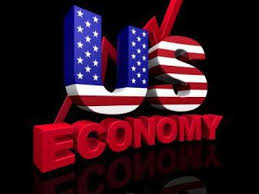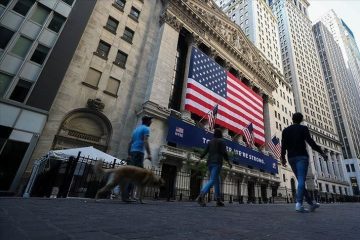The Yuge-est Threat to the Trump Economy: Spiking Interest Rates

The Trump economic plan has spawned a bull market in optimism, sending CEO spirits and stock prices soaring. But a spike in another metric–interest rates–threatens to scuttle the President’s pledge to restore American growth to heights unseen since well before the Great Recession.
In the minutes to its January meeting, the Fed revealed that “many” officials had advocated raising rates “fairly soon,” so long as the economy kept chugging. But after hiking its benchmark rate in December for the second time in a decade, the Fed was wary of adding another increase because of “considerable uncertainty” surrounding the Trump administration’s “expansionary fiscal policy,” and its possible impact on what matters most to the Fed: the future course of inflation.
While the Fed cautiously assesses Trumponomics, investors are taking the lead. The bond market has already seen a notable shift. Since mid-2016, the rate on 10-year Treasuries has jumped a full point, to 2.43%. And 60% of that the increase came in the three months and change following the election.
Sundry market watchers think that rates will keep climbing. In a recent report, Ryan Sweet, an economist at Moody’s Analytics, predicts that the 10-year will yield 3.2% by the fourth quarter of this year. That would mean a jump of roughly 80 basis points from today’s level, and a rise of 104 basis points from the final quarter of 2016, which would be one of the largest 12-month increases since the 1990s.
The power behind the surge: Investors are betting that Trump’s policies will spur inflation, now running at a modest 1.6%, to rise swiftly. The reason is two-fold. First, the new president promises increased spending on infrastructure, veterans benefits, and the military, while at the same time championing steep corporate and personal tax cuts. It’s likely that the plan will greatly deepen annual federal budget deficits that are already on course to reach over $ 1 trillion, or 19% of all spending, in 2023. Sweet predicts that the Trump plan could cost an additional $ 1.5 trillion over the next decade.
That extra spending means that lenders would get a lot more worried about America’s debt and deficits a lot sooner. As the U.S. strives to borrow more than the Chinese and other foreign governments feel comfortable lending, the Treasury will need to offer far higher rates to entice creditors. Those same creditors will also fret that the big stimulus will hike inflation, and will demand a cushion in the form of richer yields.
The second factor: The stimulus is coming at a most unusual time, when the economy is already near full employment, and many industries are tight on capacity in plants and production facilities. “The Fed isn’t worried right now about how this will be paid for, but about whether all this spending and tax cuts will boost the economy, and boost inflation,” says Paul Ashworth, an economist with Capital Economics in Toronto. “For the Fed, it’s all about inflation.”
The fear is that the spending will rapidly lift wages because of a shortage of workers, and that the extra take-home pay, enhanced by lower taxes, will chase cars and appliances that are in short supply. The new administration’s hardline stance on illegal immigration could speed up this cycle, by exacerbating the labor shortage. Put together, that’s a classic recipe for inflation.
Trump has a totally different vision. In his mind, the plan will create a virtuous cycle of investment and durable growth. Companies will spend heavily on capital investment, and as they expand, pull millions of working-age folks who’ve quit the labor force back into offices and factories. The surge in capex will raise productivity through purchases of efficient machinery, and innovative technology that makes supply chains more efficient. That combination would cause production and the labor force to expand in tandem with demand for both products and workers, thus holding real prices in check.
It’s obvious, however, that both investors and the Fed think that a surge is prices is far more likely than the supply side revolution that Trump promises. The evidence is the rate rise that’s already occurred as a harbinger of inflation to come.
If a surge in the labor and output doesn’t occur, the spike in growth will fade quickly. “You’re juicing the economy for a short period,” says Ashworth, “but it can’t grow at 3% without high inflation because productivity and labor can’t keep up. You run up against hard constraints.” In that scenario, the Fed is forced to raise rates even further to stanch inflation, causing a recession. “We haven’t repealed the business cycle,” says Doug Duncan, chief economist at Fannie Mae. “This is already one of the longest expansions on record.”
A crucial, mainly overlooked driver is the dollar. The greenback is already sitting at lofty levels, having appreciated by 20% against a broad basket of currencies over the past three years. But two forces could push the dollar far higher. First, the gigantic borrowing on its own will raise rates well above those of nations from France to South Korea that aren’t in expansion mode. Foreign governments will pile into Treasuries for their safe, fat yields. Second, as part of its campaign to quell inflation, the Fed would be likely to adopt a strong dollar policy, once again, by keeping rates at levels that would attract plenty of cash from abroad.
That combination of circumstances would make our cars and drugs a lot more costly in foreign markets, lowering exports, and dampening growth, and with it, inflation. At the same time, a weak dollar would make imports of clothes, cell phones and PCs far cheaper, exerting more downward pressure on prices.
The interest rate story encapsulates the contradictions in the Trump platform. A cornerstone of his agenda is lifting exports and, if necessary, slashing imports to shrink America’s big trade deficit. Yet his expansionary policies, paid for with more and more borrowing, will cause a rise in the dollar that will do precisely the opposite. The Border Adjustment Tax, proposed by the House Republicans to help pay for the corporate tax cuts, would add to the dollar’s strength, potentially causing an extra drag on exports.
The fear is that the Trump plan will bring a temporary surge in growth that quickly retreats to the sorry numbers of the last few years. What’s most likely to defeat Trumponomics is the high interest rates that its structure may make inevitable–in other words, a fate it would bring on itself.






